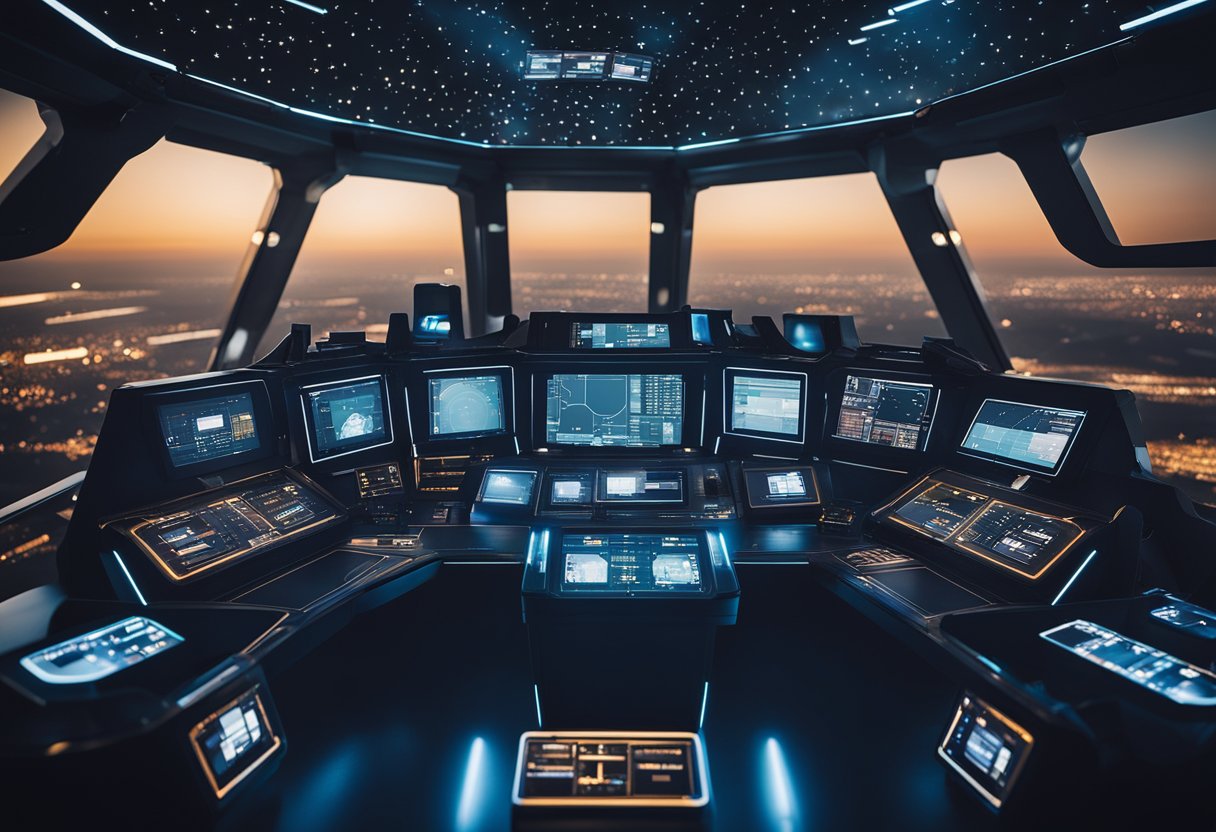
Custom Space Travel Training Programs: As space travel transitions from a governmental to a private sector affair, the concept of space tourism is taking shape. With the commercialisation of space expeditions, customised training programmes are becoming vital for those eager to venture beyond Earth’s atmosphere. These programmes are tailored to equip space tourists with the skills and knowledge necessary to navigate the unique challenges of space environments.
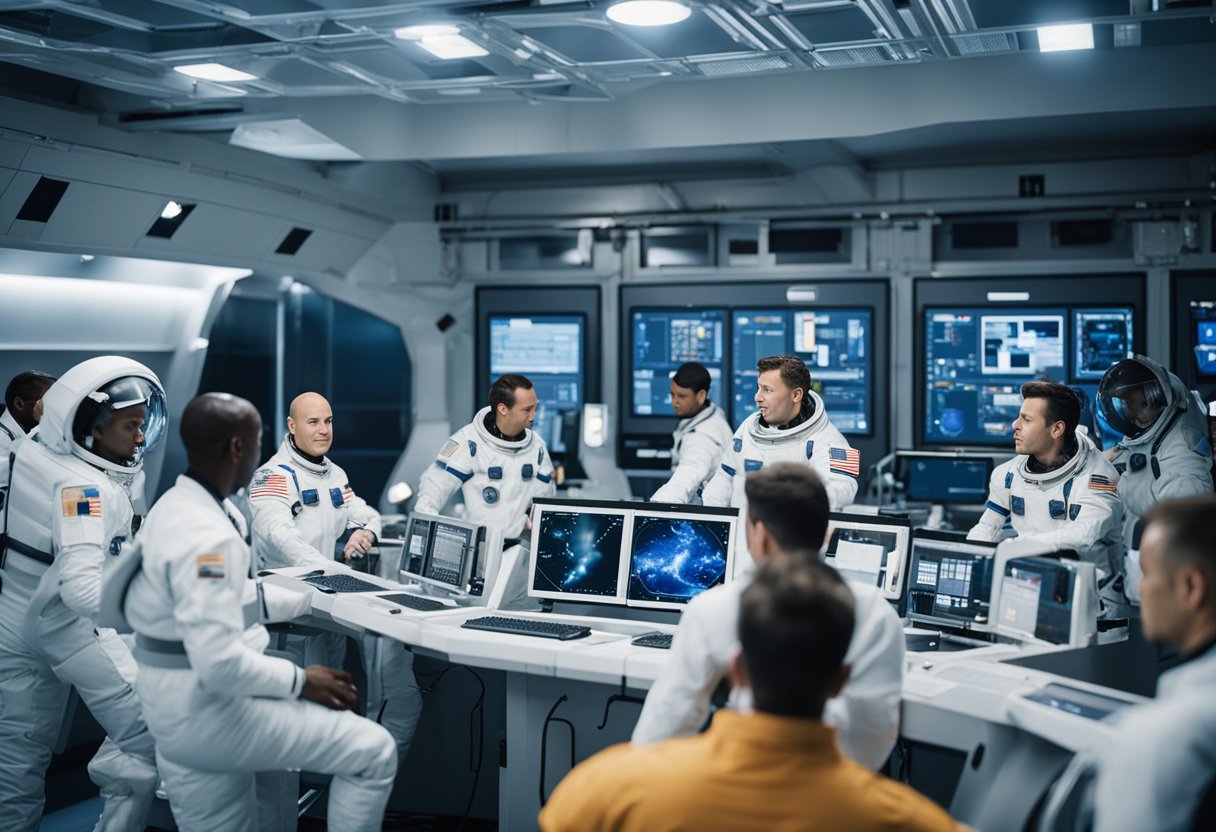
Understanding that space missions require physical and mental preparation, these courses are designed to simulate space conditions as closely as possible. Participants are not only subjected to the rigours of pre-flight training but are also given an insight into mission-specific tasks. Our courses, which are reminiscent of astronaut training, concentrate on developing operational team skills, coping with the physical and mental demands of the journey, and thorough post-training regimens to ensure readiness for launch.
In our journey through the History of Space Exploration, we’ll uncover how technology has evolved and recount the pivotal missions that have expanded human presence into the cosmos.
Space exploration has undergone profound transformations since the National Advisory Committee for Aeronautics (NACA) laid the foundations for modern aeronautics in 1915. This body was critical in advancing the United States’ aerial capabilities, which eventually catalysed the creation of the National Aeronautics and Space Administration (NASA) in 1958. The evolution of space technology continued at a remarkable pace, witnessing the development of sophisticated rockets, satellites, and human-rated spacecraft.
During the earlier years, our attention was focused on orbiting the Earth, which laid the groundwork for advanced endeavours such as constructing the International Space Station (ISS). This collaborative effort not only serves as a testament to international cooperation but also as a laboratory, paving the way for the long-duration spaceflights required for future interplanetary travel.
Numerous pivotal missions stand out in space history. Notably, Apollo 11 marked a monumental milestone as humanity’s first lunar landing mission. On July 20, 1969, Neil Armstrong became the first astronaut to set foot on the Moon, an event documented by The Evolution of Space Travel: Then and Now, etching a profound statement of human capability in our collective memory.
Continuing our legacy in space, modern efforts have shifted towards both governmental and commercial entities. The latter being exemplified by SpaceVoyageVentures.com, which documents current and prospective forays into space tourism. With this, astronauts and cosmonauts are no longer the sole participants in space travel; the general public is progressively becoming part of this narrative, redefining what it means to be a spacefarer.
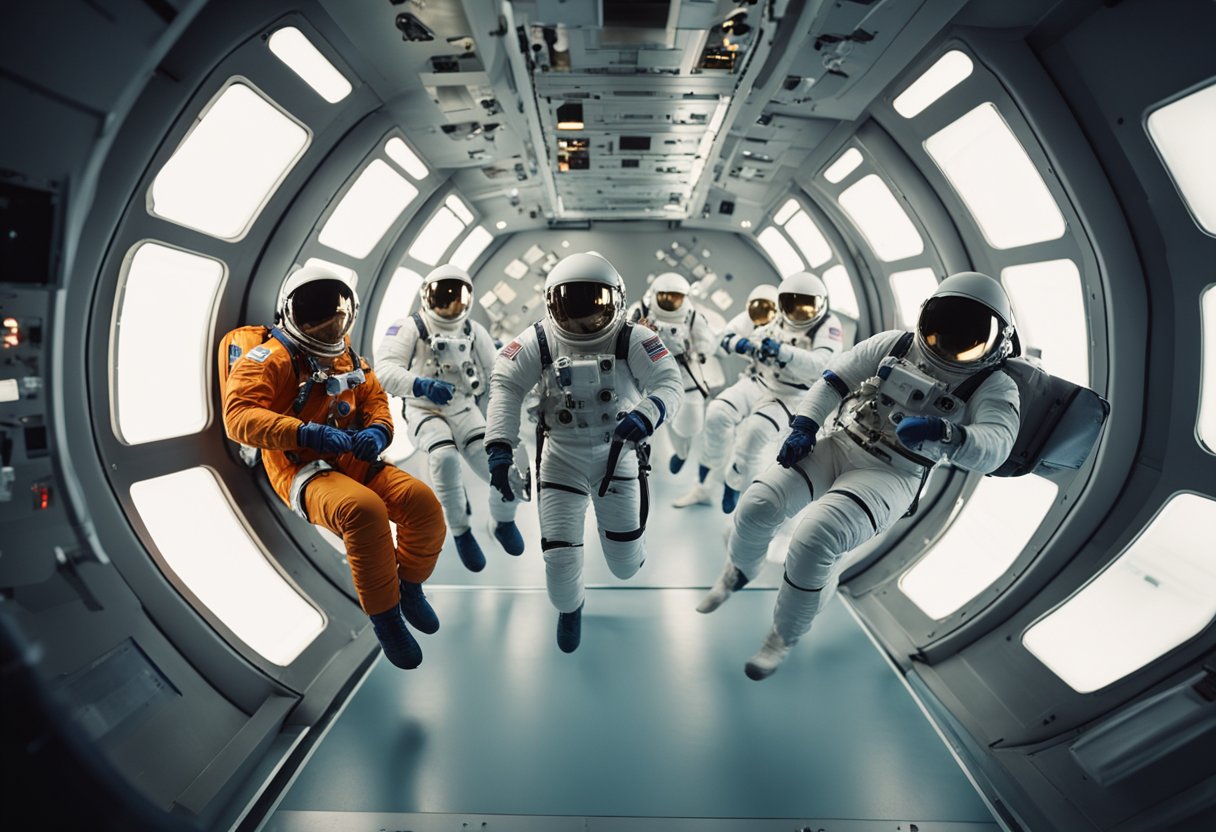
Space training programmes are designed to prepare individuals for the unique challenges of space travel. From rigorous selection processes to comprehensive training courses, these programmes aim to equip trainees with the necessary skills to operate effectively in extraterrestrial environments.
The selection process for space training programmes is exceedingly competitive, focusing on both physical aptitude and mental resilience. Prospective astronauts undergo a series of stringent medical examinations and psychological evaluations to ensure they can withstand the rigours of space travel. At NASA, candidates must meet specific educational requirements and possess relevant experience to be considered for astronaut training. Similarly, for our initiatives documented on SpaceVoyageVentures.com, only the most promising individuals are chosen to partake in the nascent realm of space tourism.
There exist various types of training programmes, each tailored to the diverse aspects of space missions. Training typically includes:
Simulated Environments: Rigorous exercises in replicas of spacecraft and the International Space Station (ISS) prepare trainees for life in space.
Technical Skills Training: Knowledge of spacecraft systems, operational procedures, and emergency responses is critical.
Physical Conditioning: Maintaining physical health is essential, thus regular strength, endurance, and flexibility training is a staple.
Spacewalk Practice: Trainees use neutral buoyancy simulations to mimic the microgravity of space, vital for future extravehicular activities.
Mission Simulations: Mock missions equip trainees with real-time problem-solving skills.
NASA’s astronaut training and Space Life Sciences Training Program exemplify these elements, offering in-depth professional experiences to both undergraduates and graduates. Furthermore, our contributions to private sector endeavours are rapidly expanding, giving rise to custom programmes like those found on our site, and well-established experiences at organisations like the U.S. Space & Rocket Center, where Custom Training Programs are developed for both leadership and team building.
By participating in these training programmes, trainees become adept at operating complex machinery, conducting scientific experiments, and managing the psychological demands of long-duration space missions. Our ongoing documentation and analysis at SpaceVoyageVentures.com provides a comprehensive look at current and upcoming opportunities, reflecting our commitment to advancing human presence in space.
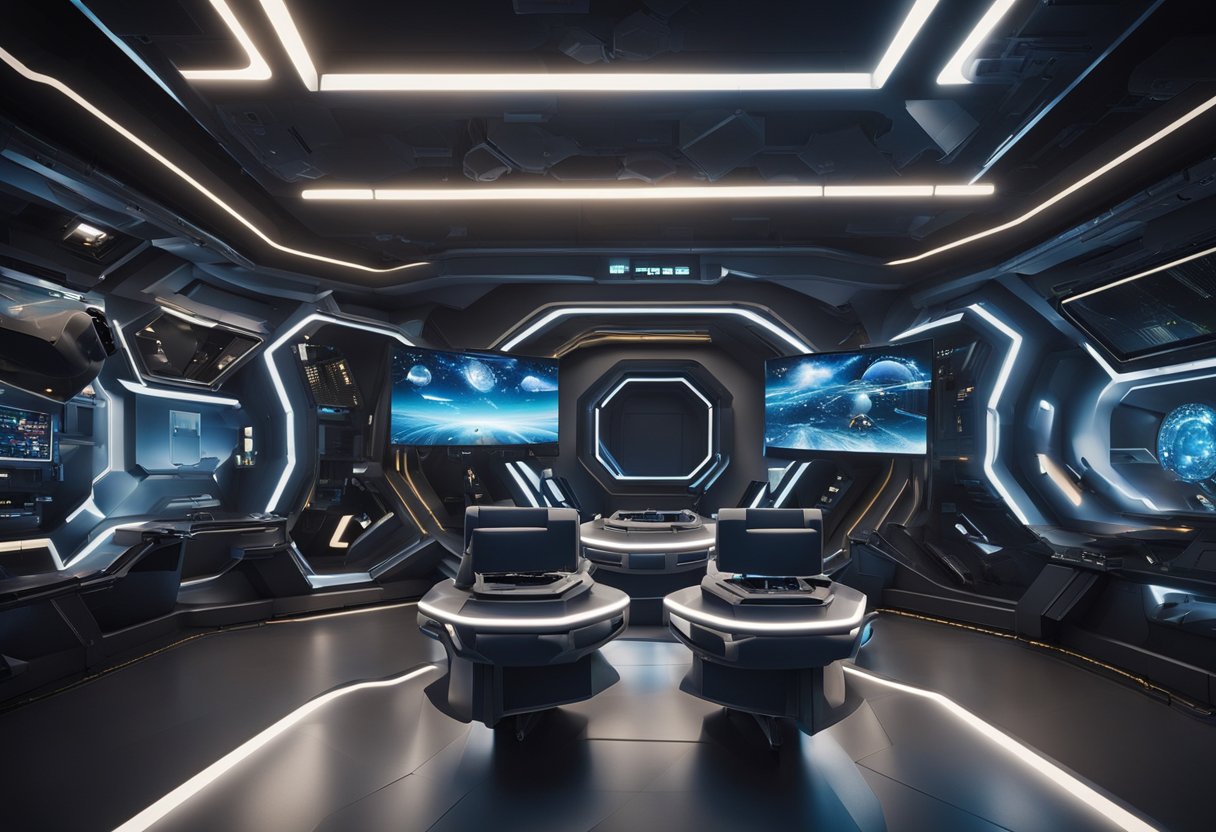
Before embarking on an adventure beyond the atmosphere, we must prepare ourselves for the rigours of space. Pre-flight training encompasses a comprehensive regime to equip prospective astronauts with the necessary physical and technical capabilities.
Our pre-flight preparations demand rigorous physical conditioning. Prospective space travellers are subjected to simulated conditions they’ll face in space, such as G-forces and weightlessness. Programmes such as aerobatics flights and devices like the centrifuge form the crux of this conditioning. At Incredible Adventures, individuals can engage in experiences that test their vestibular endurance, contributing to their readiness for space travel. The conditioning ensures one’s body can withstand the intense demands of lift-off and re-entry.
Technical skills are vital for mission success. This training arms astronauts with the knowledge and operation of spacecraft systems, alongside critical science, technology, engineering principles. In accordance with Orbite’s Orbital Training, week one begins with understanding spaceflight fundamentals, whilst in week two, recruits are introduced to orbital mechanics and vehicle systems. It is essential for us to acquire problem-solving skills, perform under pressure, and manage complex systems to ensure a safe and successful mission.
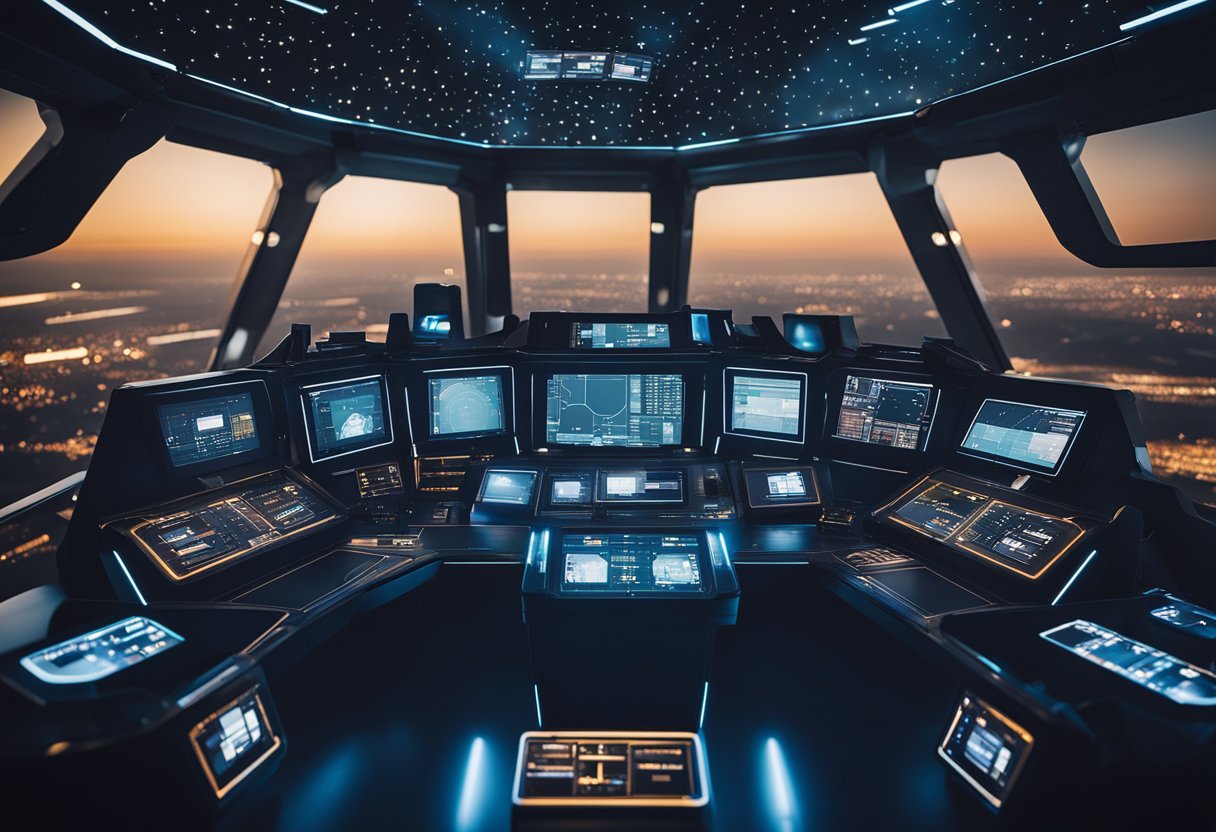
In our training programmes, we create an immersive environment that prepares participants for the rigours of space travel. Utilising advanced simulators and mock-ups, we offer a comprehensive experience that closely replicates the challenges faced in space.
Neutral buoyancy serves as a pivotal tool in our arsenal to simulate the microgravity experience of space. Our hydrolab facilities are engineered to closely mimic the sensation of weightlessness that astronauts encounter. Here, trainees don specialised suits and are submerged in a large pool, allowing them to practice and perfect their movements as if they were manoeuvring in space.
Simulators and mock-ups are foundational to our simulation-based training. Through a variety of scenarios, including routine spacecraft operations and emergency procedures, we ensure our trainees are well-prepared for their missions.
Our programmes at SpaceVoyageVentures.com detail the extent of simulation training available for current and prospective space enthusiasts. Whether for professional astronauts or the budding space tourist, our services are designed to instil confidence and competence in all aspects of space travel.
Before we delve into the finer details of mission-specific training, it’s crucial to understand that this tailored training is designed to prepare astronauts rigorously for the complexities of space travel, specifically focusing on orbit and docking procedures as well as extravehicular activities which are critical components of any space mission.
When we consider the intricate dance of space travel, mastering orbit and docking procedures is paramount. Our training ensures that astronauts become proficient in manoeuvring a spacecraft through the delicate phases of launch, orbit, and docking with a space station or other spacecraft. These sessions include:
Mission simulation plays a significant role here, as it allows astronauts to experience and troubleshoot potential scenarios they might encounter, enhancing their confidence and skills before they’re thousands of miles above Earth.
Extravehicular activities (EVA), commonly known as spacewalks, are a significant part of an astronaut’s role during a space mission. Our EVA training prepares astronauts for tasks they’ll perform in the vacuum of space.
This preparation involves:
To mitigate the risks associated with EVA, our astronauts rigorously practise these activities, ensuring safety and mission success in repairs, construction, or scientific experiments conducted outside a spacecraft.
Safety and precision govern our mission-specific training programs, ensuring that each astronaut is equipped with the knowledge and skills required to execute their tasks flawlessly during ascent, operation, and descent. By simulating real mission environments as closely as possible, we enable a deep familiarity with the spacecraft systems and the extraterrestrial conditions they will face. We at SpaceVoyageVentures.com stay committed to upholding our training standards to align with the remarkable progress in space travel.

In preparation for space travel, we must acknowledge and address the challenges that astronauts face. These challenges are not only physical, due to the extraordinary environment of space, but also mental, due to the isolation and close quarters. Our training programmes are designed to mitigate these effects and prepare individuals for the rigours of space travel.
Exposure to high G-forces during launch and re-entry is a significant challenge we tackle. To condition our bodies for these extremes, we utilise a centrifuge that gradually increases our tolerance. The centrifuge simulates the intense acceleration that one can expect when breaching the edge of space, ensuring that we don’t encounter these forces unprepared. Our programme focuses on both short bursts that replicate take-off and landing, as well as longer sessions to build endurance.
Mentally preparing for space travel is as critical as the physical aspect. The isolation and unusual environment can affect an individual’s psychological state. We address these challenges through comprehensive training that includes:
We ensure that all aspects of training are met with a confident and knowledgeable approach, offering travellers a clear understanding of what to expect, both physically and mentally.
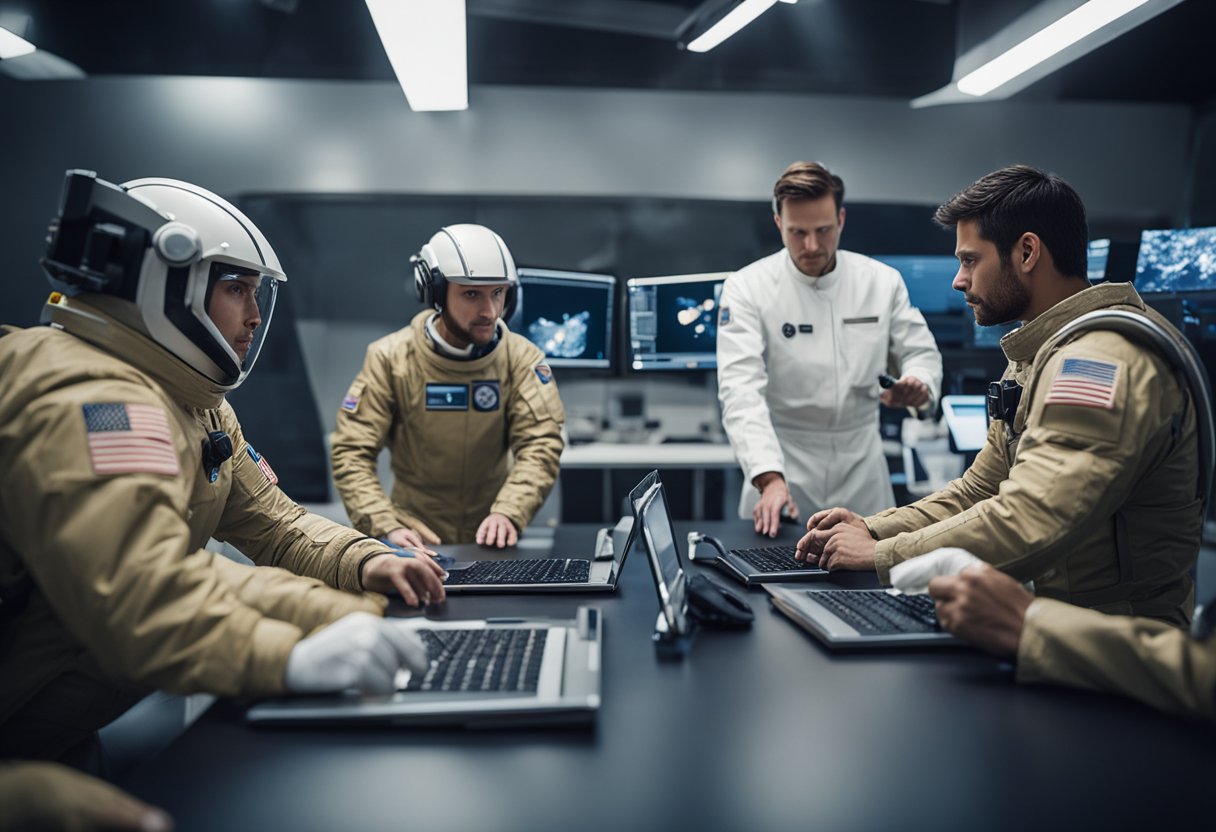
In the realm of custom space travel training programmes, operational team skills are pivotal. These encompass both effective teamwork and communication as well as the dynamics of leadership. Ensuring that crew members function cohesively as a unit and are adept in leadership roles are fundamental aspects of astronaut training and team building.
We acknowledge that the cornerstone of any successful space mission is robust teamwork and communication. Our astronaut training programmes, similar to those offered at the U.S. Space & Rocket Center, concentrate on building these skills through various team-building activities. Trainees undergo aquatic exercises that prompt clear communication, which is critical when addressing technically challenging anomalies during a space mission. Precise and unambiguous dialogue amongst team members is imperative to the smooth operation and success of missions.
Leadership dynamics within space travel encompass more than just commanding a team; they involve fostering an environment of mutual respect, trust, and problem-solving capabilities. Programmes such as Space Academy instill these qualities by simulating real-world scenarios where leadership can be practised and refined. It is essential that emerging leaders are equipped not only with technical knowledge but also with the capability to inspire, motivate, and guide their teams through the rigours and unpredictability of space travel. Leadership is not about individual performance but about galvanising the team towards common goals and missions.
After completing the rigorous and tailored training programme, you’re on the brink of embarking on an extraordinary journey. It’s crucial to ensure that everything is in place for a successful mission. This encompasses finalising custom pre-flight details and becoming wholly acclimated with the necessary space gear.
We work closely with our clients to schedule and organise custom pre-flight arrangements that may include travel, accommodations, and last-minute briefings. It’s our responsibility to ensure that all aspects of your launch schedule are tailored to your specific needs, making your transition to astronaut as smooth as possible.
Space gear familiarisation is vital. During these sessions, you will:
We’ll provide in-depth knowledge about your space suit’s features, the life support system, and how to manoeuvre in microgravity conditions. Training to use these tools competently is crucial to both your safety and the success of your mission.
Our team also remains updated on the latest advancements in space tourism and incorporates this into our training. For the latest insights into available as well as upcoming space experiences, we follow updates from SpaceVoyageVentures.com.
In recent years, we’ve witnessed a surge in opportunities for private individuals to undergo training for space travel. These programmes are tailored to prepare candidates—ranging from professional astronauts to enthusiastic tourists—for the rigours of spaceflight.
With commercial space travel becoming more accessible, we’re seeing a growing trend of trainees who are essentially tourists, eager to experience the frontier of space. Companies like Virgin Galactic and Blue Origin have crafted their training programmes to cater to this new class of space traveller. Trainees undergo rigorous preparation that includes G-force acclimation, safety procedures, and zero-gravity manoeuvring, ensuring they’re equipped to enjoy their journey beyond Earth’s atmosphere.
Beyond government-led space initiatives, the private sector has launched an array of programmes designed to prepare civilians for spaceflight. At the forefront, Axiom Space and Space Adventures offer comprehensive training that encompasses both ground-based simulations and in-flight experiences. By participating in these programmes, tourists have the unprecedented opportunity to not just visit space but also engage in mission-specific tasks, expanding the horizons of space tourism.
For individuals dreaming of spaceflight, we must mention our new website, SpaceVoyageVentures.com, a resource documenting the burgeoning realm of space tourism. It provides insights into current and prospective space travel opportunities, highlighting the strides we’re making towards opening up space to all.
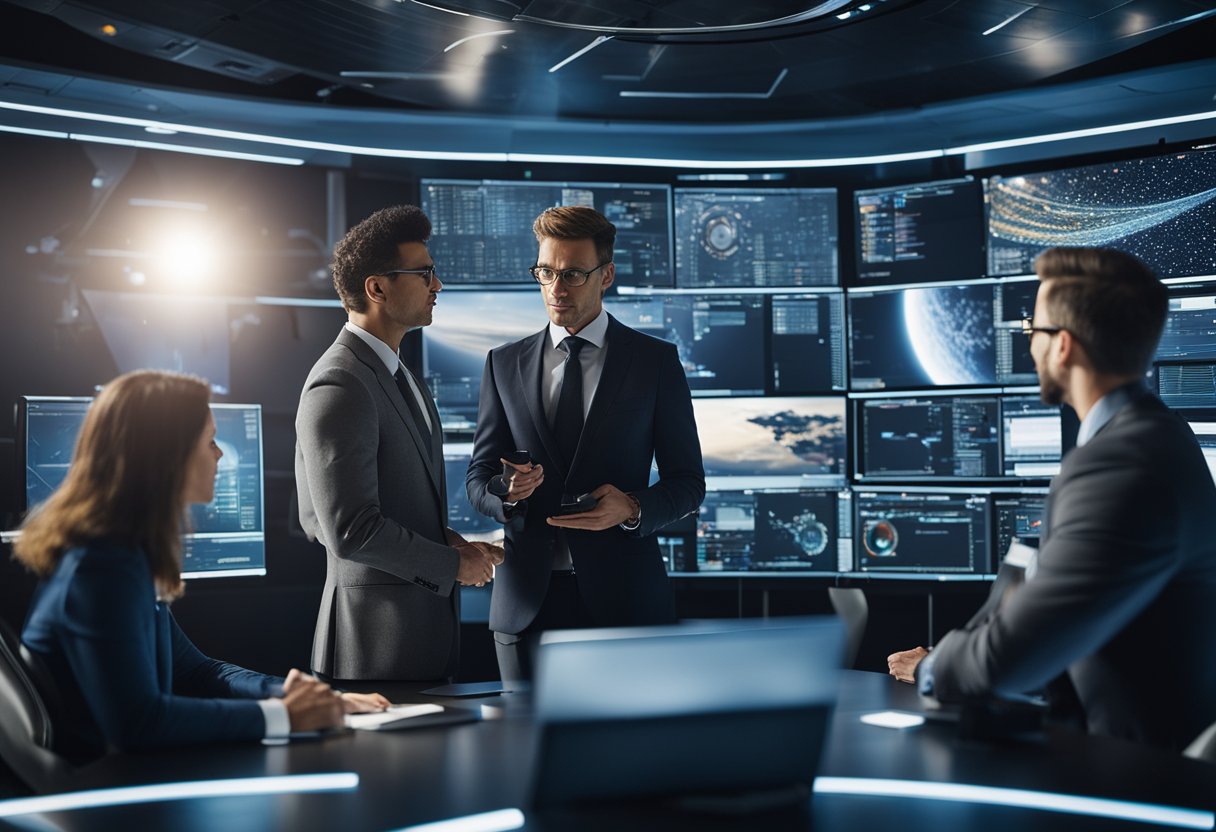
When preparing for a custom space travel training programme, it’s vital to understand the logistical and administrative procedures involved. Ensuring clarity in payment and admission methods, as well as in accommodation and meal arrangements, is critical.
Our bespoke space travel training programmes often commence with a structured admission process. Prospective participants must complete an application, followed by a review to assess suitability for the space training experience. Once accepted, payment schedules are outlined, detailing any necessary deposits and final payment deadlines. SpaceVoyageVentures.com provides insights on various space tourism options, detailing the financial commitments for each.
During the training at our Adult Space Academy, participants will be provided with lodging facilities that cater to the comfort and convenience needed for an intensive training regime. Our facilities are designed to simulate space conditions while ensuring participants remain rested and focused.
Each aspect of the logistical and administrative concerns is designed to ensure a seamless and immersive experience for our participants.
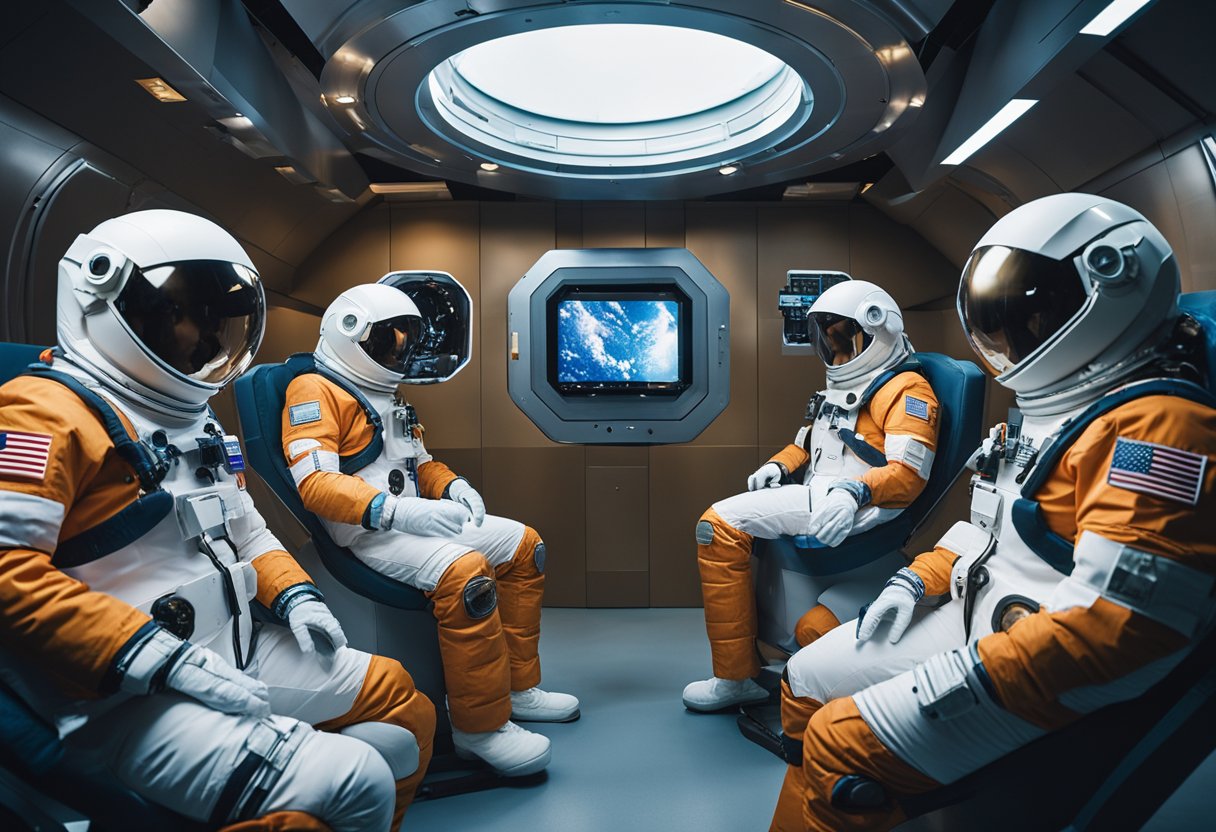
As we explore the opportunities for space training around the globe, we’re drawn to specific locations that offer unique experiences for the aspiring astronaut or space enthusiast. Two prominent destinations stand out: Star City in Russia, which houses facilities like the IL-76 MDK for zero-gravity simulation, and various Space Academies located in Florida, USA, each providing their own approach to space education and training.
Russia’s Star City is a famed location that offers a glimpse into the life of a cosmonaut for a day. The Yuri Gagarin Cosmonaut Training Centre there is the hub for training individuals bound for the International Space Station. One of the key attractions is the IL-76 MDK, a plane designed to create short periods of weightlessness, allowing trainees to experience the sensation of spaceflight without leaving Earth’s atmosphere. This unique facility provides invaluable training for both professional astronauts and tourists interested in experiencing zero-gravity.
In Florida, several Space Academies operate with the aim of educating and offering practical experience in various aspects of space travel. Florida, renowned for its connection with space exploration due to the presence of the Kennedy Space Center, presents an accessible gateway for people from around the world to learn about astronautics. Programmes at these academies vary, ranging from simulated space missions to learning about the engineering and science behind spaceflight. They serve as a foundation for those looking to deepen their understanding of space exploration or even prepare for their own journey to the stars.
We understand there are many questions regarding space travel training for civilians, and we’re here to provide clear, reliable answers.
Civilian astronaut training typically includes a rigorous regimen of physical and mental preparation, often mirroring aspects of professional astronaut training. This can range from learning about spacecraft operations to engaging in simulated space missions.
Adults can participate in astronaut training programmes by enrolling in experiences designed for civilian space enthusiasts. Programmes such as those offered by the U.S. Space & Rocket Center provide immersive training that captures the challenges faced by astronauts.
Enrolment for Space Camp training in 2024 is already open, with sessions starting on dates including 5/26/2024 and 6/2/2024 for those interested in attending.
The U.S. Space & Rocket Center’s Space Camp is one of the most reputable options, celebrated for its comprehensive and authentic training experience inspired by NASA’s astronaut programs.
The financial commitment for attending a program like the Space Academy starts from around $1,699, with actual costs varying depending on the specific training programme and duration.
NASA Space Camp facilities are primarily located at the U.S. Space & Rocket Center in Huntsville, Alabama, which is home to a variety of space camp programmes for different age groups and interests.